17 Fun ESL Vocabulary Games for Adults and Kids
What are your methods for teaching vocabulary?
Drills? Flashcards? Yuck! Boring!
While these can certainly be effective, they can be a quick way to lose your student’s attention if you spend too much time on them in a class.
So what can you do then? The answer?
Play some fun ESL vocabulary games with them!
In this huge listicle, you’ll find 17 great ESL vocabulary game ideas (suitable for adults, teens, and kids) with detailed instructions to include in your lessons.
ESL Vocabulary Games for Kids… AND Adults, too?
Games are a great way to get your students to engage and use the language without fighting for their attention every few minutes.
Well, that’s great for children I hear you saying, but what about adults?
Well, as surprising as it may sound… Adults enjoy having fun too!
In fact, a number of the games here are what adults often play while socializing with friends or family anyway so they may already be familiar with them in the native language.
That being said, while some of these vocabulary games can be great for adults, this isn’t the case for all of them.
Some games on this list can be a little silly and adult students would most likely feel more than a little patronized if they were to play them. The same could be said for some games which may be too “boring” for children.
For that reason, this list also has information about the appropriate target student. It mentions:
- student level (from beginner to advanced)
- type of lesson (group and/or one-to-one)
- student type (children and/or adults)
Make sure to read each game carefully before trying it in your class. Make a note of any realia/resources you may need and if possible practise how you will run the class so there aren’t any surprises in the classroom! Let’s get started.
1. Whispers
- Student level: Pre-Intermediate to Advanced
- Type of lesson: Group
- Student type: Children & Adults
The idea of “whispers” is to get a message from one end of a line of people to the other. To start: –
- Person 1 needs to whisper a message to person 2 (without anyone else hearing)
- Person 2 then needs to whisper the message to person 3 etc until we reach the end of the line.
This game can get difficult because some mistakes creep into the message which can lead to a message which is vastly different at the end than it is at the start.
Once the message reaches the end, the final person reveals what they think it is. This often results in hilarity!
This game trains the students to be able to understand messages in situations that aren’t so clear. It also trains them to try to understand a sentence using context. As long as the students can form sentences then they will be ok with this game.
2. Describe It
- Student level: Intermediate to Advanced
- Type of lesson: Group or Individual
- Student type: Adults
With “describe it” the idea is to give a student a word. This can be anything you want really but nouns and verbs are going to be easier than things like adverbs and prepositions. Once the student has their word, they then have to describe it without using the word itself!
Whoever manages to guess this correctly then gets to go next and you can keep going until everyone in the class has had a turn.
The benefit of this game is that it forces students to use synonyms/antonyms that they might not use usually. It also helps them to develop the skill of using the language to try to express something even if they don’t have that particular word in their vocabulary.
This game is a little more difficult than the others and is better suited to intermediate to advanced learners. Coupled with the fact that you may lose some attention from children, this is better aimed at adults.
3. Tongue Twisters
- Student level: Pre-Intermediate to Advanced
- Type of lesson: Group or Individual
- Student type: Children & Adults
Tongue twisters are a fun way to practise new vocabulary!
In case you don’t already know what they are; A tongue twister is a sentence (or several) that is very difficult to say (usually due to a sequence of similar sounds).
An example of this would be “she sells seashells by the seashore”.
These are both great fun and extremely useful as they can be used to train pronunciation for new vocabulary. They are effective with adult students but due to their silliness, it’s no surprise that kids love them!
While there are already plenty of tongue twisters out there, you will likely have to create your own, specific to the vocabulary you are learning. (hint – don’t try to cram all of the TL into one sentence, pick one new word for each tongue twister.)
To add a more competitive element to it, (besides just saying the sentence without mistakes) you can time the students and get them to try to go faster and faster each time!
4. I went to the supermarket…
- Student level: Beginner to Advanced
- Type of lesson: Group
- Student type: Children & Adults
This game is a great one to flex those memory muscles! It goes something like this:
- Create a circle of students.
- Student 1 starts by saying “I went to the supermarket and I bought [some bread].” (this [ ] can be anything they choose.)
- Student 2 then says “I went to the supermarket and I bought some bread and [an apple].” (They have to say what the previous student said but then they choose a new object for themselves.)
- Student 3 then says “I went to the supermarket and I bought some bread, an apple and [some cheese].”
- You then continue around the circle with the students adding more and more items until somebody isn’t able to remember all of the list.
You can choose to either reset the game once the list can’t be remembered or… for a more competitive element you can choose to reset the list minus the student who couldn’t remember. You can then repeat this until there is a “definite winner”.
As this game is more to do with memory and doesn’t necessarily involve complex vocabulary, it is suitable for students of all ages and levels.
Illustrated Resources for Teaching ESL Vocabulary
5. I Spy
- Student level: Beginner to Pre-Intermediate
- Type of lesson: Group or Individual
- Student type: Children
“I spy with my little eye…” If you didn’t play this as a child then you missed out! But fear not, you have a chance to catch up with this fun game now.
- Student 1 first picks an object in the room (without saying what it is). For example, maybe they see a “clock”.
- They then have to say the phrase “I spy with my little eye, something beginning with…” and say the first letter of the word [c].
- The other students have to guess what it is and whoever is correct becomes the next person to play.
Keep going until everyone has had a turn to play. This game can be fairly simple if there are common words such as “pen”, “book” etc.
However, if you really want to bring more of a challenge, then bring some props with you or load up an image on a projector with many items.
This game is good when learning basic vocabulary and is better suited to beginners and more specifically children.
6. Word Association
Student level: Pre-Intermediate to Advanced
Type of lesson: Group or Individual
Student type: Children & Adults
This one is great to stimulate some creativity. It is also a very simple idea.
- Student 1 says a word. It can be anything but for this example, we will say “green”
- Student 2 says a word that is related to Student 1’s word. “Grass”.
- You can then continue around the chain with each student adding a related word to what the previous person has said.
The rules are simple. You have to be able to explain why a word is related. You also can’t repeat a word that has already been said! To make this one harder you can also include a timer.
7. A-Z Categories
Student level: Pre-Intermediate to Advanced
Type of lesson: Group or Individual
Student type: Children & Adults
In this game, the teacher picks a category such as (fruit, countries, languages, etc). The idea is then for the students to think of something for each letter of the alphabet.
So if we picked the category “countries” then it would go like this:
- Student 1: “America”
- Student 2: “Belgium”
- Student 3: “China”
You can then continue until all of the letters have been completed. Some beginners will be fine with something like “food” but some categories can be more difficult so bear this in mind when picking a topic.
You may also want to consider cultural backgrounds. “Countries” is a good topic because although they have different names in different languages, they are known by everyone. However, a topic like “bands” can become more difficult as students may want to pick their local favourites which might not be known by others.
8. Match
Student level: Beginner to Pre-Intermediate
Type of lesson: Group or Individual
Student type: Children
For this game, you need two sets of cards. The first set of cards will have pictures of various things (e.g ball, house, etc), the second set will have the vocabulary on. As you probably have guessed by now, the student’s aim is to match the pictures up with the vocabulary.
You can vary this one a bit depending on how many are playing.
- With just one student playing you can simply time how long it takes them to match them all and then get them to try and beat that record the second time around.
- With more students, you can divide them into two teams. Whichever team gets the most pairs wins. (You may prefer to have the teams have one student up at a time to make sure things don’t get too crazy!)
This one is for children. It works especially well with complete beginners because the explanation needed is minimal, demo the game to them and they will take to it like ducks to water!
9. Word Grab Race
Student level: Beginner to Intermediate
Type of lesson: Group
Student type: Children
To set this game up you again need a collection of cards with the vocabulary on. Mix all the cards up (while still being able to see them all.) Next, divide your students into two teams. A student from each group will have their turn first.
When the teacher says the word, the chosen student from each team has to run to the front and find the correct card with the word on from the pile. Once they have brought it back to the group both teams will then switch the active player.
This is repeated until all of the cards have been captured. The team with the most at the end wins.
To make this harder, instead of the teacher saying the word you could show a picture (on a screen) or hold up an object. This forces the students to use the vocabulary and understand what it means.
10. Hangman
Student level: Pre-Intermediate to Advanced
Type of lesson: Group or Individual
Student type: Children & Adults
Hangman takes a little bit of explaining but… once your students understand it then they will love it!
The basic point of hangman is for the students to guess a word (picked by the teacher).
They take turns guessing a letter each. If the guess is correct (the letter is in the word) then the teacher will write the letter on the board, if the guess is wrong then a part of “the hangman” is drawn.
There are 8 parts to the drawing:
- Draw the post (an upside-down “L”).
- Draw the head (a circle) underneath the horizontal part of the post.
- Draw the body (a vertical line under the head).
- Draw arm 1 (a stick from the body).
- Draw arm 2 (another stick from the other side of the body).
- Draw leg 1 (a stick at the bottom of the body).
- Draw leg 2 (a stick on the other side at the bottom of the body).
- Draw the noose (a line joining the head to the post).
The students need to guess what this word is before the picture of the hangman is complete. If they guess it correctly before the hangman is complete then they win, if not then they lose.
If you want to include the students further then whoever wins the round can have a turn at drawing the hangman in the next round.
This game is fun regardless of age, group size or ability (as difficulty can be altered by using harder or easier vocabulary).
11. Stand up / Sit Down
Student level: Beginner to Intermediate
Type of lesson: Group
Student type: Children
For this game, you will need either a board and projector or some realia. First of all, make a line of chairs with the students sat down (facing the teacher).
- You will then show either an image or hold up an object.
- Next, you say either the correct vocabulary or a different word.
- If what you say and what is shown is correct then the children stand up, if not then they stay sat down.
To add a competitive angle to this you can have the ones who get it wrong lose the game and leave the round, repeat this until there is a winner. Alternatively, if everyone is very good then you could do the last student to stand up / sit down lose that round.
This game is ideal for children, they love getting involved and moving around. It is a great way to win pre-schoolers back if you find you have lost their attention part way through a class.
12. Spelling Throw
Student level: Beginner to Intermediate
Type of lesson: Group
Student type: Children
The idea of this game is to get the students to spell a word out one letter at a time, each student takes it in turns saying each letter though which is what makes it difficult.
To begin, you first need to arrange the students in a circle (either seated or standing). You will also need a ball. For this example let’s say the chosen word is “tiger”.
- Student 1 – “t” *throws the ball to student 5
- Student 5 – “i” *throws the ball to student 3
- Student 3 – “g” etc
This continues until the word is complete. Again, like with the other games you could do a knockout rule where if a student gets the wrong letter then they are out of that round (repeat until there is a clear winner).
If this game is slightly too easy for the students then you can introduce a timer system where they will only get a few seconds to answer, if they don’t answer in time then they are also out.
This game is best suited to children, they will enjoy using a ball to interact with. It is also more suited to beginner levels (especially when learning how to spell.) Keep this one away from adults or advanced students unless you want to hear some patronized groans!
13. Draw It
Student level: Beginner to Intermediate
Type of lesson: Group or Individual
Student type: Children & Adults
Great fun with children and adults alike. Similar to “describe it”, the idea is for the student to express a chosen word without saying it. The difference here is that we are now drawing instead of describing.
Obviously we will need something to draw with for this. Pen and paper would work fine if we are struggling for resources but it would be better to use something bigger so it’s easier for the students to see, so try to grab a whiteboard!
Once you have a chosen student, tell them the chosen word (without anyone else hearing), they then have to draw it. The other students have to guess and the first one to get it right can then have their turn. Keep going until everyone has played at least once.
The advantage of this game over “describe it” is it can be a lot easier for beginner students to draw something than to try to think of a way to describe it in English. That being said if your students are advanced, they may benefit more from the added difficulty of “describe it”.
14. Word Search
Student level: Beginner to Advanced
Type of lesson: Individual
Student type: Children & Adults
These take a little longer to prepare but when it comes to actually playing, they are as easy as they come.
For anyone that doesn’t know what a word search is, you basically have a grid of squares. Inside each square is a letter. At first glance, it will appear as if you are staring at a giant mess of random letters. However, there are words hidden inside this mess that must be found.
Although this game could, in theory, be done in groups, it is one that is better suited towards individual students. It can be hard for some students to wait for their turn without shouting out that they’ve found one (especially true with children!).
The great thing about a word search is that they are very easy to play. Even if you use advanced vocabulary, the ability to look for a word is still the same so this game is suitable for students of all levels.
15. Synonyms
Student level: Intermediate to Advanced
Type of lesson: Group or Individual
Student type: Adults
With synonyms, the point is to give a student a word, and they have to give you a synonym for that word in return. (E.g. teacher says scalding, student says hot). For this, you will need to do some research and make sure you know some synonyms for the TL of that lesson.
A very basic idea, but we have a lot of room to work with this. Here are some things we can change:
- Add a time limit (e.g the student has 3 seconds to reply)
- Time limit for the whole group (e.g how many can the group get in 3 minutes)
- In a group, the student (who just answered) could ask the next student
- Use antonyms as well
- Have the students ask the teacher
This game is dependant on the students having at least a medium-size vocabulary so I would advise sticking to medium to advanced level students. Also, while this game is fun to an extent, it is more so for adults. Some children may lose concentration with this one so only play with them if you know you can hold their focus.
16. Shiritori
Student level: Intermediate to Advanced
Type of lesson: Group or Individual
Student type: Adults
The classic Japanese game – Shiritori! You need very little to play this game, which makes it ideal as a backup activity as well.
Simply set up the chairs in the classroom so that everyone can see and hear each other clearly. A circle arrangement is a great choice as it allows everyone to hear each other and there’s an obvious order to whose go it is.
- Choose a student or go first yourself
- The first person (A) says a word. This can be something that was taught in the class if you want to reinforce that. Or, if this is a backup activity then it can be any word.
- The next person to the left (B) will then say a word that starts with the last letter of A’s word. So if A said “boat” then B could say “three”.
- The game carries on around the circle until you reach the original student again.
- At this point you can either end the game there or carry on if you have time.
A very basic idea but we have a lot of room to work with this. Here are some things we can change:
- Add a time limit (e.g the student has 3 seconds to reply)
- Time limit for the whole group (e.g how many can the group get in 3 minutes)
- In a group, the student (who just answered) could ask the next student
- Use antonyms as well
- Have the students ask the teacher
This game is dependent on the students having at least a medium-size vocabulary, so I would advise sticking to medium to advanced level students. Also, while this game is fun to an extent, it is more so for adults. Some children may lose concentration with this one so only play with them if you know you can hold their focus.
17. Charades
Student level: Beginner to Intermediate
Type of lesson: Group
Student type: Children & Adults
In case you haven’t played charades before, this is how to play:
- Select a student to be “a word”, e.g. red, an apple
- Without speaking, this student has to get the other students to guess the word.
- They can elicit the answer by using body movements, pointing to things in the room etc. Basically anything, as long as they do not speak.
- Whoever guesses the answer first gets to be “it” in the next round.
This is a great game for beginners as it works better with beginner vocabulary (run, sit, 4 etc.)
Beware, you may struggle with more complex vocabulary… (try acting out the word situational!)
18. Vocab Bingo
Student level: Beginner to Intermediate
Type of lesson: Group
Student type: Children & Adults
Prepare Bingo sheets with grids and add one word to each square. Select the grid size (from 3×3 to 6×6) and the words according to the level of English of your students and the expected duration of the game.
Write all words you’ve added to the sheets on a list; maybe add some more. Call out the words in random order, and have the students mark the words when they hear it.
They can use a pen, or better: put little items on the squares. This is more fun, and you can reuse the sheets.
The first person to mark each word on his sheets wins.
You can make this ESL vocab game a bit harder: Don’t call out the exact words in the squares, but synonyms, or opposites, or any kind of related words (for example when you call “rain”, they have to mark “umbrella”).
Conclusion
So, there we have it, 18 games for you to try in your classes.
Make sure to pay attention to the suitability for each game and most importantly practise these before you get in the classroom.
Hopefully, these will also have sparked your creative juices so you will be able to think up some of your own.
Remember to keep it fun, educational and engaging!
If you want to find activities to build classroom community, you can have a look at this article.
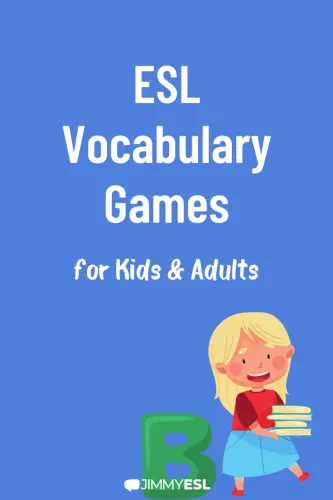
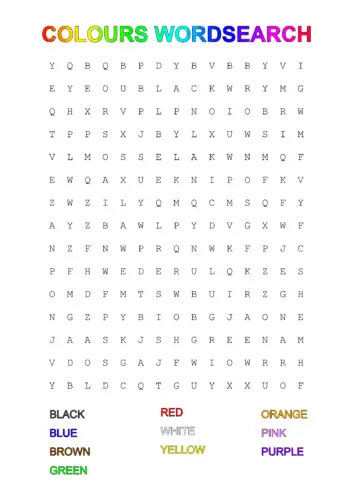
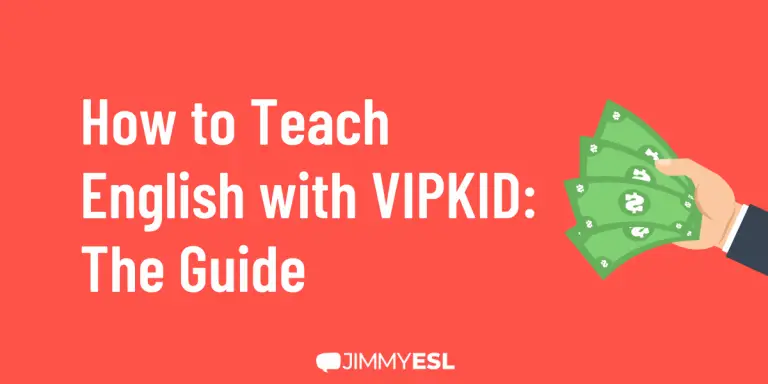

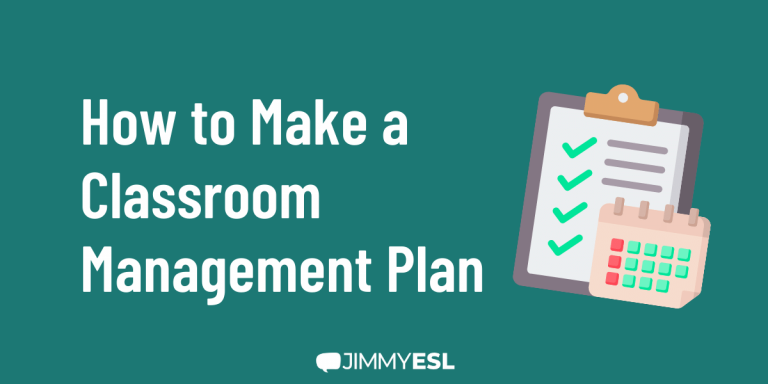

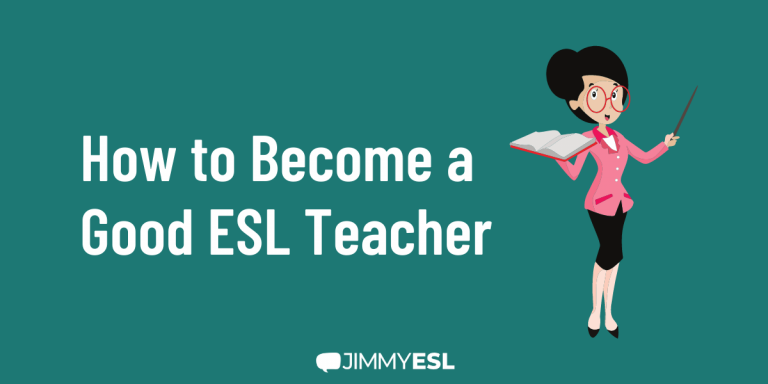

Tongue twisters are my favorite activity when I work with children. The excitement and enthusiasm they show when they hear and try to reproduce these whimsical rhymes are hard to describe. My favorite tongue twisters to use: https://www.reed-james.com/single-post/2018/10/11/Tongue-Twisters
You’ve also given me some interesting interactive ideas that I can’t wait to try. Thank you!
Thanks for these great ideas! One comment: I think there’s a typo in your description of ‘synonyms’; ‘hot’ is a synonym for ‘scalding’, not ‘scolding’.
Thanks for being such an attentive reader, Fred! Fixed the typo!
Good ideas here but not all feasible online! At the moment with the corona virus all my lessons with kids are online. Any ideas for games? I have been doing “I spy”, Category race (say a letter), clicking on the emotocions and icons on Skype to describe them and using flashcards.
thanks in advance!
Suzanne.
Please tell us about the games that we can play online with kids, now that we can’t have actual classes (thanks to Corona Virus). Thanks!
Thank you a lot, I will definitely try it.
Great! How did you get on with them?